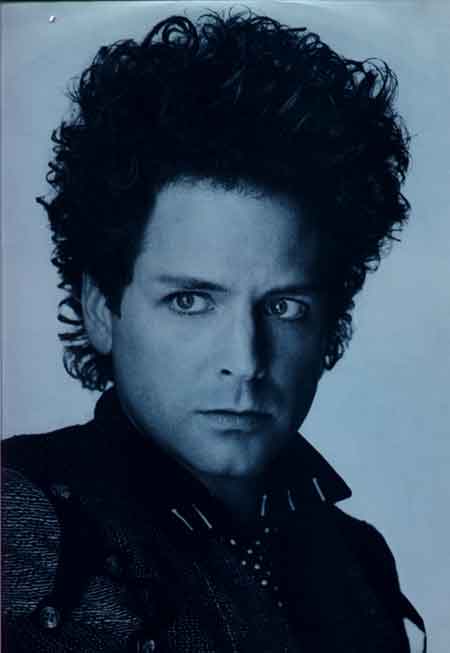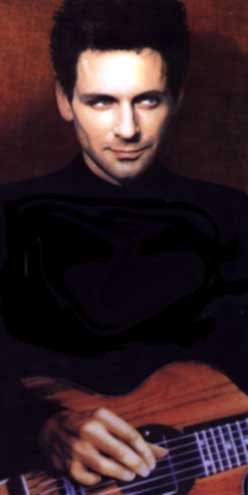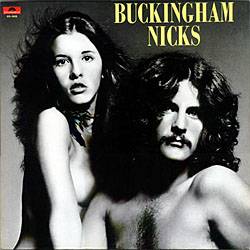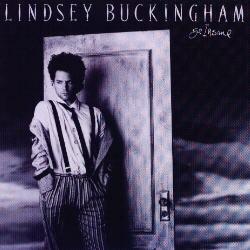|
"The Recording of Fleetwood Mac's
Rumours"
Memories of the Making of Rumours
Richard Dashut (co-producer):
I'd worked with Lindsey Buckingham and Stevie Nicks since their debut album,
Buckingham-Nicks. After they joined Fleetwood Mac, Lindsey invited me to do
their live sound. They started recording Rumours in Sausalito, across the bay
from San Fransico, with the Record Plant's engineer, but they fired him after
four days for being too into astrology. I was really just around keeping Lindsey
company, then Mick takes me into the parking lot, puts his arm around my
shoulder and says, Guess what? You're producing the album. The funny thing was,
I never really wanted to be a producer. I brought in a friend from wally
Heider's studio in Los Angeles, Ken Caillat, to help me, and we started
co-producing. Mick gave me and Ken an old Chinese I-Ching coin and said, Good
luck.
Cris Morris (recording assistant):
I'd helped build the Record Plant. I knew every nail, because I'd driven
most of them in. I'd helped make what became known as Sly Stone's Pit, a control
booth sunk into the floor, so the musicians could sit and play around it. When
we recorded Sly there, he had his own personal tank of nitrous oxide installed,
and that was still there.
Mick Fleetwood (Fleetwood Mac):
It was a bizarre place to work, but we didn't really use Sly Stone's pit.
It was usually occupied by people we didn't know, tapping razors on mirrors.
Chris Morris:
Because Record Plant had three studios, a lot of other musicians dropped by.
Van Morrison hung out a lot. Rufus and Chaka Khan, Rick James. Jackson Browne
and Warren Zevon came down because Jackson wanted Lindsey and Stevie to do
backing vocals on his album.
Herbie Worthington (photographer):
I'd been working with them since 1974, so when they started Rumours, I was
brought in to document it for the inner sleeve. The girls were kind of kept
apart, in a hotel while I lived with the guys in a house that belonged to Record
Plant, about five minutes away. Things personally, were falling apart for them.
Lindsey Buckingham (Fleetwood Mac):
You had both couples, John and Christine McVie and Stevie and myself, in the
process of breaking up during the making of the album, so you had all this
cross-dialogue going on in the songs.
Christine McVie (Fleetwood Mac):
We had two alternatives - go our own ways and see the band collapse, or grit
our teeth and carry on playing with each other. Normally, when couples split,
they don't have to see each other again. We were forced to get over those
differences.
Herbie Worthington:
Mick was like the father hen, always overseeing everything, although his
marriage to Jenny Boyd was breaking up too. He wanted everybody to be so happy
so the atmosphere would be creative. For example, he would take the clocks out
of the studio so people were less aware of time passing.
Chris Morris:
Mick also co-owned Fleetwood Mac with John. Lindsey and Stevie were just
hired to play with the band. Now, John's ideas were rooted in blues and that
didn't get with Lindsey who was more pop and experimental, which caused extra
friction. Mick being the boss, sided with John.
Richard Dashut:
It took two months for everyone to adjust to one another. Defenses were
wearing thin and they were quick to open their feelings. Instead of going to
friends to talk it out, their feelings were vented through their music: the
album was about the only thing they had left.
Lindsey Buckingham:
There was nothing specifically worked out when we went in the studio. We
didn't have demo takes. The whole thing just happened.
Christine McVie:
When we went in, I thought I was drying up. I was practically panicking
because every time I sat down at a piano, nothing came out. Then one day in
Sausalito, I just sat down and wrote in the studio, and the four and a half
songs of mine on the album are a result of that.
Mick Fleetwood:
We started trying to put down basic backing tracks, although we were all
feeling so desperately unhappy with life. We spoke to each other in clipped,
civil tones, while sitting in small airless studios, listening to each other's
songs about our shattered relationships.
Herbie Worthington:
One night in the control room, John came in with a bottle of wine. I was
photographing the girls, but he grabbed some cord and stuck it into the neck of
the bottle. Then he turned it upside down, taped it once on the floor with the
other end of the cord taped to his arm, so it looked like he was getting an
intravenous drip of alcohol. We were cracking up, but it was very symbolic of
everything that was going on.
Mick Fleetwood:
It was the craziest period of our lives. We went four or five weeks without
sleep, doing a lot of drugs. I'm talking about cocaine in such quantities that,
at one point, I thought I was really going insane.
Chris Morris:
Meanwhile, we were trying to get unique sounds on every instrument. We spent
ten hours on a kick drum sound in Studio B. Eventually, we moved into Studio A
and built a special platform for the drums, which got them sounding the way we
wanted.
Christine McVie:
Dreams developed in a bizarre way. When Stevie first played it for me on the
piano, it was just three chords and one note in the left hand. I thought, This
is really boring, but the Lindsey genius came into play and he fashioned three
sections out of identical chords, making each section sound completely
different. He created the impression that there's a thread running through the
whole thing.
Chris Morris:
Never Going Back Again, which we did in Sound City in LA, took forever. It
was Lindsey's pet project, just two guitar tracks but he did it over and over
again. In the end his vocal didn't quite match the guitar tracks so we had to
slow them down a little.
John McVie (Fleetwood Mac):
It was very clumsy sometimes. I'd be sitting there in the studio while they
were mixing Don't Stop, and I'd listen to the words which were mostly about me,
and I'd get a lump in my throat. I'd turn around and the writer's sitting right
there.
Chris Morris:
For that one, I sat between Mick and Christine because her piano was set up
so that she was at an angle to his drums and they couldn't see each other, but
hey could both see me. I had to stand there for six hours co-ordinating the
time.
Mick Fleetwood:
Go Your Own Way's rhythm was a tom-tom structure that Lindsey demoed by
hitting kleenex boxes or something. I never quite got to grips with what he
wanted, so the end result was a mutated interpretation. It became a major part
of the song, a completely back-to-front approach that came, I'm ashamed to say,
from capitalising on my own ineptness. There was some conflict about the "crackin'
up, shackin' up" line, which Stevie felt was unfair, but Lindsey felt
strongly about. It was basically, "On your bike, girl!"
Christine McVie:
The Chain started as the tail end of a jam and we did it all the wrong way
around. We kept the end bit and added a new beginning. We used Stevie's lyrics,
I created the chorus and Lindsey did the verses. I really don't know how it all
came together.
Richard Dashut:
The only two instruments that were actually played together on that album
was the guitar solo and drum track on The Chain. It wasn't necessary or even
expedient for them all to be in the studio at once. Virtually every track is
either an overdub, or lifted from a separate take of that particular song. What
you hear is the best pieces assembled, a true aural collage. Lindsey and I did
most of the production. That's not to take anything away from Ken or the others
in the band - they were all involved. But Lindsey and myself really produced
that record and he should've gotten the individual credit for it, instead of the
whole band.
Chris Morris:
Somebody, one of Lindsey's girlfriends I think it was, came in one night
with some marijuana cookies - we called them the thousand dollar cookies. They
turned out to be incredibly powerful and everybody got very zonked out for the
next twelve hours. We lost the rest of that day and most of the one after.
Mick Fleetwood:
Things got so tense that I remember sleeping under the soundboard on night
because I felt it was the only safe place to be. Eventually the amount of
cocaine began to do damage. You'd do what you thought was your best work, and
then come back next day and it would sound terrible, so you'd rip it all apart
and start again.
Chris Morris:
Recording Gold Dust Woman was one of the great moments because Stevie was
very passionate about getting that vocal right. It seemed like it was directed
straight at Lindsey and she was letting it all out. She worked right through the
night on it, and finally did it after loads of takes. The wailing, the animal
sounds and the breaking glass were all added later. Five or six months into it,
once John had got his parts down, Lindsey spent weeks in the studio adding
guitar parts, and that's what really gave the album its texture.
Richard Dashut:
We wore out our original 24-track master. We figured we had 3,000 hours on
it and we were losing high end, transients and much of the clarity. The drums
were valid and maybe a couple of guitar parts. We ended up transferring all the
overdubs on the master to a safety master. We had no sync pulse to lock the two
machines together, so we had to manually sync the two machines - ten tracks by
ear using headphones in twelve-hour sessions. People thought we were craze but
it turned out really good.
back to
Lindsey in-print
|






